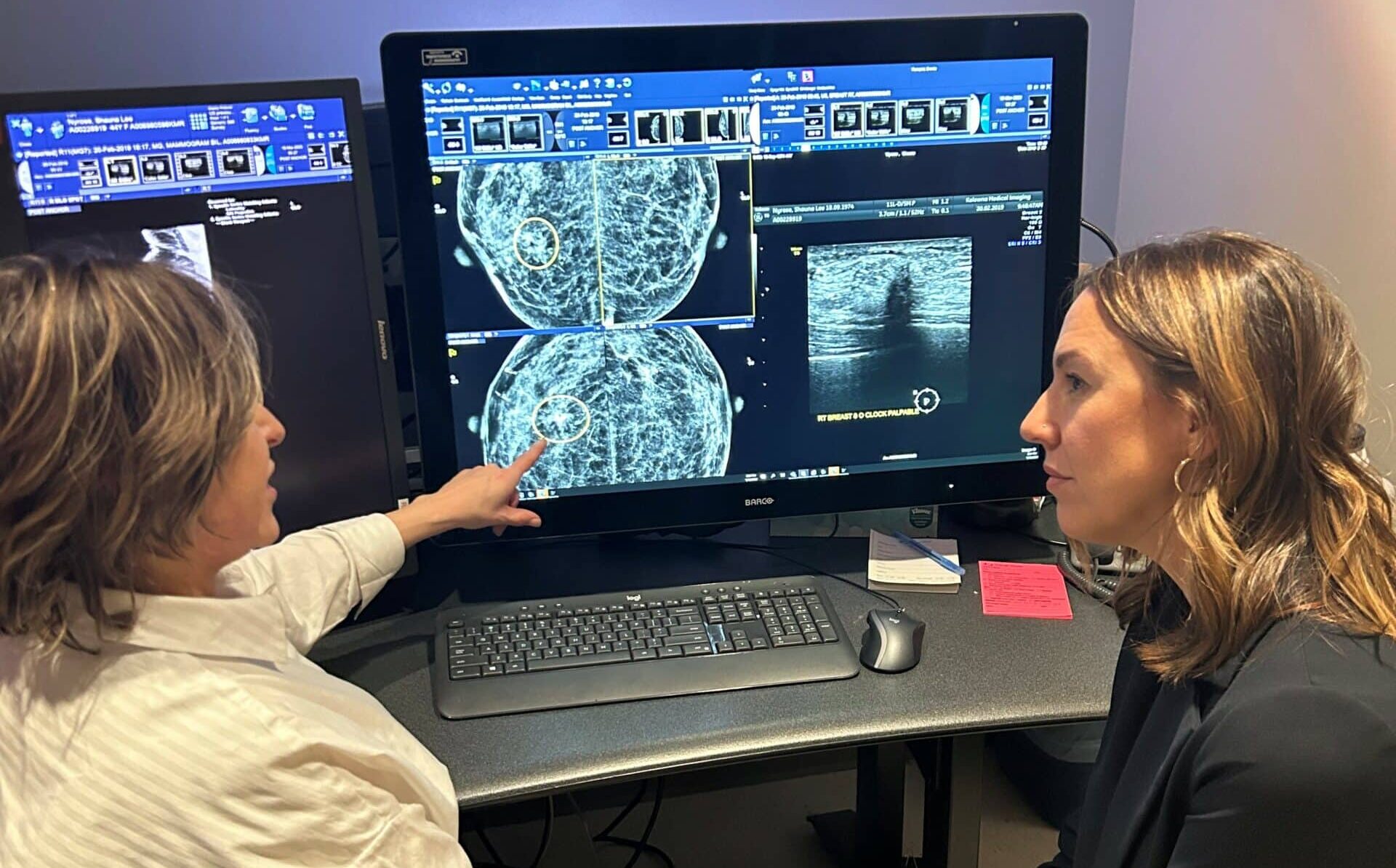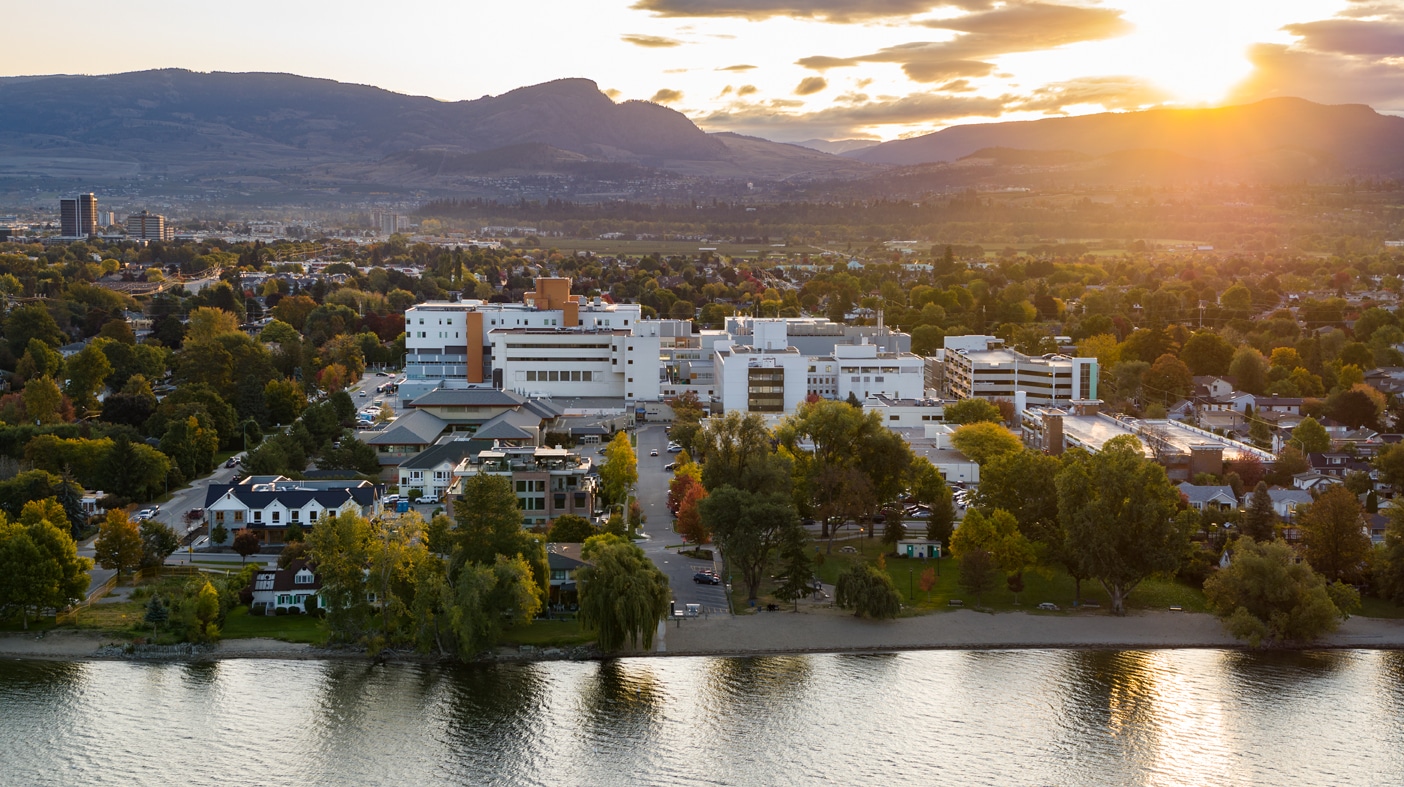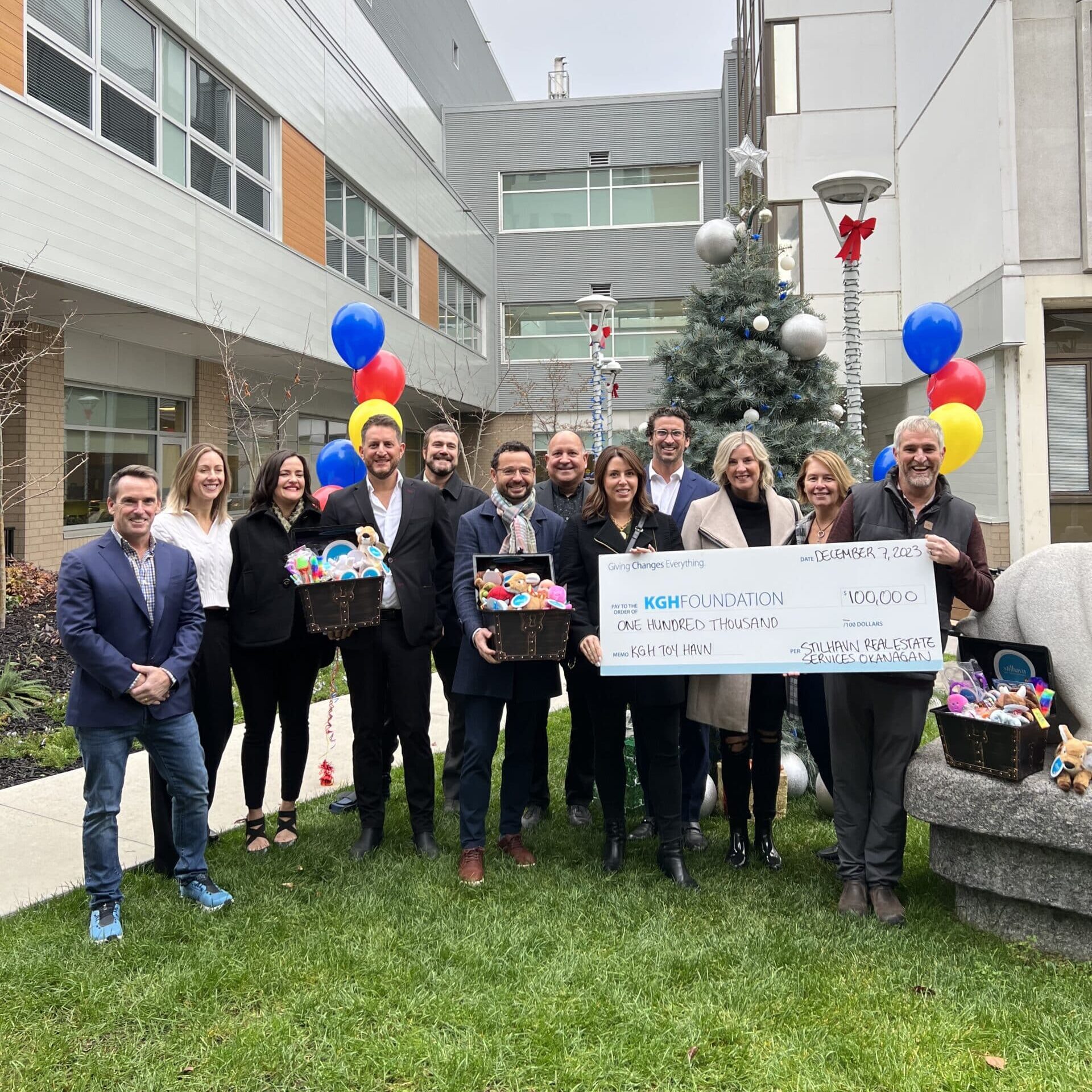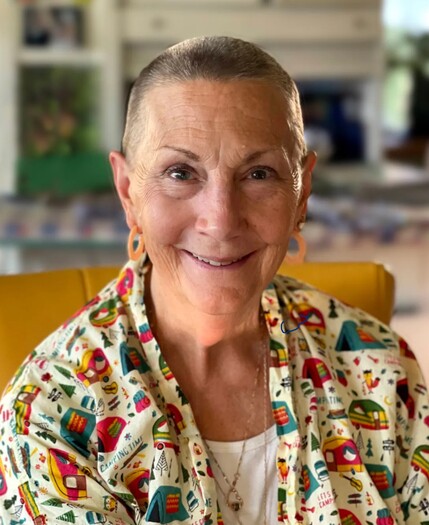CAMPAIGN: CLOSER TO HOME THAN YOU THINK
TAKING ON CANCER
As the Foundation sets its sights on fundraising for Cancer Care at this year’s KGH Day of Giving, our VP Brand and Communications,
Shauna Nyrose, shares her story.

One in eight. That’s how many women can expect to develop breast cancer in their lifetime.
It is often said that stats are just numbers, until you become ‘the one’. I will admit, at 44 years old, with no family history, this was not a story that I ever expected to be mine.
I chose to share now because before I became a cancer patient, I had no idea what diagnosis and treatment entailed. If you’ve had cancer, you know. If you haven’t, it’s likely touched someone close to you.
It felt like a little chocolate chip. “Probably nothing to be concerned about,” said my family doctor. “But let’s get it checked.” That’s how it began. In a tiny, dark room, with an ultrasound. In addition to being a life-saving tool for breast cancer screening and early detection, medical imaging plays a crucial role in cancer diagnosis. I had never even had a mammogram because I had not hit the magic age of 50 to qualify for screening. As I stared out the window at the grey, Okanagan winter sky waiting for the radiologist to review my scans, I had the first sense that something was wrong. It was taking too long.
That was when I first met Kelowna General Hospital (KGH) radiologist, Dr. Brenda Farnquist. What a gift to our hospital. She couldn’t tell me for sure that it was cancer—a biopsy would be needed for that—but I knew by the look on her face.
Within a few days I was scheduled to see Dr. Jonathan Scheske for the biopsy, a diagnostic procedure guided by medical imaging, to remove a sample of breast tissue for testing. I received the call from my family doctor with the results a few days later. The pathology from the biopsy confirmed it was invasive lobular carcinoma (ILC), the second most common breast cancer diagnosed in Canada.
Cancer typically involves more than one treatment and requires a multidisciplinary approach, or a combination of therapies. Treatment plans often involve a primary therapy—in my case, surgery—in addition to radiation therapy, adjuvant and/or neoadjuvant therapy, like chemotherapy or hormone therapy to help increase the treatment’s chance of success and decrease the risk of recurrence.
Surgery plays a crucial role in the treatment of breast cancer (and many others). Not only does it remove the tumour(s) in the early stages of disease, it helps to prevent the spread to other parts of the body and allows for the examination of nearby lymph nodes, which is necessary for accurate staging of the disease’s progression.
Thankfully, KGH is home to exceptional surgical oncologists, including Dr. Andreas Kluftinger. He patiently outlined what surgery would entail and tried to prepare me for what the pathology (my tumour characteristics) might mean for future treatment. I was anxious and terrified. I’d never even had surgery before. Dr. Kluftinger was patient, knowledgeable and kind—exactly what I needed.
Soon, I would be making more friends in the KGH Medical Imaging department. Before surgery, I would need: a CT scan to determine whether the cancer had spread to other organs, and nuclear imaging where a tiny amount of radioactive matter is injected at the tumour site to help Dr. Kluftinger precisely locate the tumour (fun fact: it also turns the area bright blue… for several years!).
On March 25, Dr. Kluftinger performed a partial mastectomy and lymph node dissection. A few days later, he called me personally – the best call I’ve ever received in my life – to tell me the cancer had not spread, the margins were clear and I would not require additional surgery. As Mary Miller, dear friend and donor to the KGH Foundation who passed from cancer herself in 2020, said to me at the time, ‘Answered prayers.’
It was at this stage in my diagnosis and treatment that I would finally meet the incredible medical and radiation oncologists, and radiation therapists at the cancer centre in Kelowna. My last radiation session took place on July 9, 2019.
When you’re healthy (like I thought I was), you might not think much about cancer care. But when facing a life-altering diagnosis, it’s literally all you think about. You just hope that whatever the treatment entails, it will be the best of the best. Without a doubt, advancing our hospital’s capacity to diagnose and treat cancers will not only save lives, but it will elevate care where it matters most. In our hospital, right here, where we live.
When it comes to cancer, it is projected that nearly half of us will become ‘the one’. Though my journey has deeply personalized what was once just a mere statistic, the KGH Foundation’s commitment to advance cancer care isn’t solely about individual journeys; it’s about driving excellence and making an impact within our community in the face of one of the greatest health challenges of our time.
— Shauna Nyrose, VP Brand and Communications, KGH Foundation
Closer to home than you think is a $40 million campaign to fund immediate needs and health care innovation in multiple priority areas of care, including Cancer Care. The goal is to raise $3.5 million specifically to fund diagnostic and surgical advancements to treat cancers, right here at KGH.


